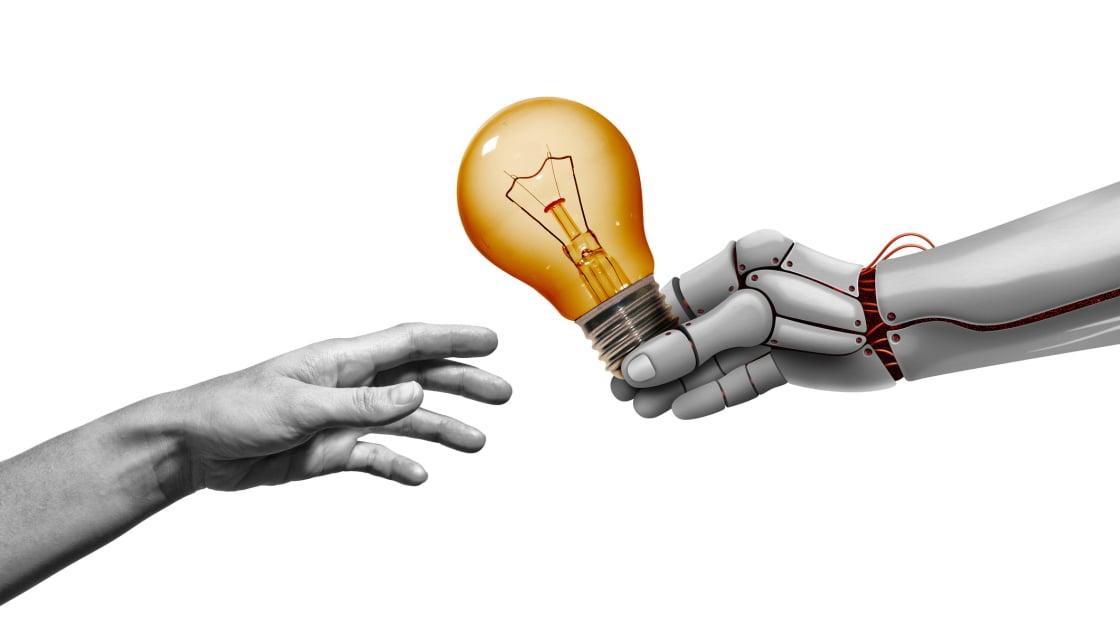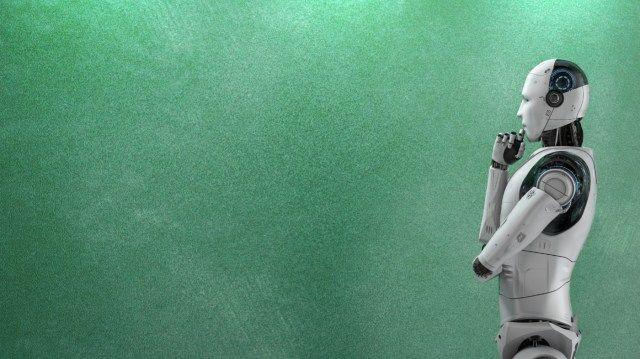USPTO Clarifies AI Cannot Be Named as Patent Inventor in New Guidelines
6 Sources
6 Sources
[1]
USPTO: No, AI Can't Be Your Co-Inventor
The U.S. Patent and Trademark Office (USPTO) has clarified its ground rules governing AI-assisted inventions. The new guidance states that inventors are free to use AI systems during their invention process, without these AI systems becoming co-inventors legally. "They are analogous to laboratory equipment, computer software, research databases, or any other tool that assists in the inventive process," reads the guidance. It states that the same principles apply to AI systems as "they may provide services and generate ideas, but they remain tools used by the human inventor who conceived the claimed invention." "Artificial intelligence systems, regardless of their sophistication, cannot be named as inventors or joint inventors on a patent application, as they are not natural persons." When multiple people are involved in creating an invention with AI assistance, the organization will apply its traditional joint-inventorship principles, including what's known as the "Pannu factors." The guidance comes after President Biden's Executive Order on AI, issued in October 2023, told federal agencies to clarify how intellectual property law would apply to AI. The new guidance entirely supersedes its previous guidelines, published in February 2024. Plenty of other countries are taking a similar hard-line approach, saying that AI simply can't possibly be an inventor. In December 2023, the UK Supreme Court rejected a bid by computer scientist Stephen Thaler to patent an idea for a food-and-drink container using his AI system DABUS as the inventor. Thaler has also made failed attempts to get his AI registered as an inventor in the EU. Still, plenty of legal experts think that co-crediting AIs as inventors is logical and necessary. Professor Mark Lemley, a professor at Stanford Law School, slated the patent office's decision in a post on LinkedIn. Lemley accused the office of "assuming that ignoring AI conception somehow takes care of the problem," arguing that "it doesn't." The academic feels that the office's approach could be storing up issues for later down the road. "In practice, I suspect this means applicants will lie about who made AI-generated inventions, the PTO will let them, and those patents will be in trouble if and when they are enforced in court," he said.
[2]
US patent office says generative AI is equivalent to other tools in inventors' belts
While generative AI systems cannot be considered inventors under US patent laws, the US Patent and Trademark Office has updated its guidelines on how they can be used in the process of creating innovations. The agency's director, John Squires, said in a notice obtained by Reuters that the USPTO deems genAI to be "analogous" to other tools that inventors might use in their process, including lab equipment, software and research databases. "AI systems, including generative AI and other computational models, are instruments used by human inventors," Squires wrote. "They may provide services and generate ideas, but they remain tools used by the human inventor who conceived the claimed invention." The notice [PDF], which is set to be published in the Federal Register on November 28, notes that there's no separate process for evaluating whether an AI-assisted invention qualifies for a patent. "When multiple natural persons are involved in creating an invention with AI assistance, the traditional joint inventorship principles apply," Squires added. The Court of Appeals for the Federal Circuit has ruled that "AI cannot be named as an inventor on a patent application (or issued patent) and that only natural persons can be inventors." There's no change to that stance under the latest USPTO guidelines. But the updated rules do offer more clarity as to whether things like new medications that are developed with the help of genAI systems can be patented.
[3]
US Patent office says AI can make inventions, but you will get the credit
Patent office clarifies how AI-assisted inventions will be treated The US government just laid down the law on who owns an idea when AI helps create it. The US Patent and Trademark Office (USPTO) issued new guidelines basically saying that AI tools - like ChatGPT, image generators, or coding assistants - are just that: tools. According to USPTO Director John Squires, these systems are legally the same as a microscope, a database, or a piece of software. They help you get there, but they aren't the inventor. Recommended Videos The big rule is simple: Only a human can be an inventor. Even if an AI suggested the idea or drafted the design, a human has to be the one who "conceived" the invention to get a patent. You cannot list an AI as an inventor on the application. This actually shifts things a bit from the previous administration, which used a "joint-inventor" standard for AI-assisted stuff. Now, the patent office is simplifying it: there is just one standard for inventorship, and AI doesn't get a seat at the table. Why this is important and why you should care This matters because AI is suddenly everywhere in innovation. Scientists use it to find new drugs; engineers use it to design better parts. Without clear rules, nobody knew if they could actually own the things they were building with AI help. For anyone with a big idea, this is actually good news. It gives you certainty: Human idea + AI help = Patentable. (You own it). AI idea + zero human input = Not Patentable. (Nobody owns it). If you are an inventor or work at a startup, this is your wake-up call to document everything. You need to be able to prove that the "spark" came from a human brain, not just a prompt. For the rest of us, it's a reminder that no matter how smart AI seems, the law still sees it as a fancy hammer - not the carpenter. Here's what's next for you While the patent office has spoken, this probably isn't the end of the fight. Courts have said AI can't hold patents, but they haven't really figured out the messy middle ground where AI does 90% of the heavy lifting. As AI gets better at "thinking" up complex solutions on its own, you can bet there will be more lawsuits. The big question for the next few years is whether this "tool" definition holds up, or if patent law eventually has to evolve to recognize machine creativity.
[4]
Can AI Be Listed as a Patent Inventor? USPTO Says No - Phandroid
If you've been using AI tools to develop your next big app idea or tech innovation, here's something you need to know. The United States Patent and Trademark Office issued revised guidelines on November 26, 2025, making it crystal clear that AI systems cannot be named as inventors on patent applications. Instead, the USPTO AI inventor guidelines treat generative AI as a tool, similar to lab equipment or software, rather than a creator. The new guidance scraps the USPTO's February 2024 AI inventorship rules, backing up Federal Circuit precedent from Thaler v. Vidal that only natural persons can be inventors. This means every patent claim requires significant human conception and contribution. However, AI-assisted inventions remain patentable if a human significantly contributes to every claim. For developers working on Android apps, Chrome extensions, or any software project where AI helps generate code or solve problems, this clarifies ownership. You remain the inventor even when ChatGPT writes functions or AI tools suggest algorithms. The key is documenting your human input throughout the process. The guidelines implement Executive Order 14179 from January 2025 to promote US AI leadership by removing prior barriers. This applies equally to utility patents, design patents, and plant patents. The shift treats AI more like Android Studio or other development tools rather than a collaborative partner. For inventors and companies, this changes how you document your work. You'll need to prove human roles in AI workflows, like prompt engineering, refining AI outputs, or selecting which AI-generated solutions to implement. Think of it like showing your creative decisions when publishing apps to prove authorship. One important caveat involves global priority claims. U.S. patent applications can't claim priority from foreign AI-only inventor filings. Only shared human inventors qualify, which affects multinational research and development teams. The bottom line? Your AI tool might help generate code, design interfaces, or solve technical problems, but you're still the inventor who owns the patent rights. Just make sure you document your human contribution at every stage, from initial concept to final implementation.
[5]
US Patent Office Says AI Cannot Be Listed as Inventor
* New USPTO guidance treats AI as a tool, not a patent inventor * Previous 2024 joint-inventor draft has now been rescinded * AI is also not eligible for joint inventorship patents The United States Patent and Trademark Office (USPTO) has issued new guidelines clarifying how inventions developed with the help of artificial intelligence (AI) systems and tools will be treated under the US patent law. A notice regarding this change to the patent guidelines was published on Friday, highlighting that AI-assistent inventions do not quality the AI system itself to be treated as the inventor. The regulator highlighted that AI systems are viewed as tools and equipments, and they cannot be named in a patent application. USPTO Shares New AI-Related Patent Guidelines In a notification issued on Friday, the USPTO stated revised patent guidelines for AI-assisted inventions, highlighting that the technology will no longer be evaluated under a separate standard. Now, for inventorship, the same rules as traditional inventions will apply to AI systems. The patent watchdog also said that generative AI systems must be viewed as "tools" used by human inventors, not as inventors themselves. Only a human being who conceived the claimed invention may be named on the patent. "AI systems, including generative AI and other computational models, are instruments used by human inventors. They are analogous to laboratory equipment, computer software, research databases, or any other tool that assists in the inventive process[..]They may provide services and generate ideas, but they remain tools used by the human inventor who conceived the claimed invention," the notification stated. The previously issued guidance from February 2024, which had considered applying a joint-inventor standard when AI is involved, has now been rescinded. The USPTO formally stated that the so-called "Pannu factors" (three criteria from the court case Pannu v. Iolab Corp), used historically to determine whether multiple human co-inventors qualify, do not apply when only one human inventor is involved and AI assistance is used. Importantly, the agency emphasised there is no separate or modified standard for AI-assisted inventions. Examiners will evaluate inventive contributions using existing criteria, focusing on human conception of the core inventive idea and any improvements being technically described, rather than on the role of AI in generating drafts or suggestions. Further, while AI assistance is not prohibited, the burden remains on applicants to demonstrate that human creativity and decision-making produced the invention. Generic use of AI tools for drafting, ideation, or data processing does not automatically translate to inventorship or patent eligibility.
[6]
US Sets New Rules for Patents Involving AI | PYMNTS.com
By completing this form, you agree to receive marketing communications from PYMNTS and to the sharing of your information with our sponsor, if applicable, in accordance with our Privacy Policy and Terms and Conditions. In guidance released Wednesday and scheduled for publication on Friday, USPTO Director John Squires emphasized that generative AI should be treated similarly to longstanding research tools such as laboratory equipment and software. Per Reuters, the notice states that these systems "may provide services and generate ideas, but they remain tools used by the human inventor who conceived the claimed invention." The agency also wrote: "When one natural person is involved in creating an invention with the assistance of AI, the inquiry is whether that person conceived the invention under the traditional conception standard." The USPTO reiterated that AI itself cannot be named as an inventor under U.S. law, echoing its earlier position that only human beings can hold that designation, according to Reuters. Related: Anthropic's Discovery of Autonomous AI Espionage Raises Legal and Regulatory Questions The guidance also moves away from a previous approach used under former President Joe Biden's administration. That earlier method relied on standards typically applied to determine whether multiple individuals qualify as joint inventors. Instead, the updated framework makes clear that all inventions -- whether involving AI or not -- are subject to the same inventorship rules. "The same legal standard for determining inventorship applies to all inventions, regardless of whether AI systems were used in the inventive process," the notice said on Wednesday. "There is no separate or modified standard for AI-assisted inventions."
Share
Share
Copy Link
The U.S. Patent and Trademark Office has issued updated guidelines stating that AI systems cannot be listed as inventors on patent applications, treating them instead as tools similar to laboratory equipment or software.

USPTO Issues Definitive Stance on AI Inventorship
The U.S. Patent and Trademark Office (USPTO) has released comprehensive new guidelines clarifying that artificial intelligence systems cannot be named as inventors or co-inventors on patent applications. The guidance, published on November 28, 2024, treats AI systems as tools rather than creative entities, fundamentally reshaping how AI-assisted innovations will be evaluated under U.S. patent law
1
.According to USPTO Director John Squires, AI systems "are analogous to laboratory equipment, computer software, research databases, or any other tool that assists in the inventive process." The guidance explicitly states that "artificial intelligence systems, regardless of their sophistication, cannot be named as inventors or joint inventors on a patent application, as they are not natural persons"
2
.Superseding Previous Guidelines
The new guidelines completely replace the USPTO's previous AI inventorship rules published in February 2024, which had considered applying a joint-inventor standard when AI systems were involved. The updated approach eliminates any separate evaluation process for AI-assisted inventions, instead applying traditional inventorship principles across all patent applications
5
.Under the revised framework, when multiple people collaborate on an invention with AI assistance, the office will apply traditional joint-inventorship principles, including the established "Pannu factors" from the court case Pannu v. Iolab Corp. However, these factors only apply when multiple human inventors are involved, not when a single human works with AI assistance
1
.Practical Implications for Inventors
For inventors and companies utilizing AI tools in their development processes, the guidelines provide crucial clarity on ownership and documentation requirements. The rules establish a clear framework: human conception plus AI assistance equals patentable invention, while AI-generated ideas without human input cannot be patented
3
.Inventors must now focus on documenting their human contributions throughout the AI-assisted invention process. This includes demonstrating roles in prompt engineering, refining AI outputs, and selecting which AI-generated solutions to implement. The burden remains on applicants to prove that human creativity and decision-making produced the core inventive concept
4
.Related Stories
International Context and Legal Criticism
The USPTO's position aligns with similar stances taken by other major patent offices worldwide. The UK Supreme Court rejected computer scientist Stephen Thaler's attempts to patent inventions using his AI system DABUS as the inventor, and similar rejections occurred in the European Union. This international consensus reflects a coordinated approach to maintaining human-centric patent systems
1
.However, the decision has drawn criticism from legal experts who argue it may create enforcement challenges. Stanford Law School Professor Mark Lemley warned that the approach could lead to applicants misrepresenting AI involvement in their inventions. "In practice, I suspect this means applicants will lie about who made AI-generated inventions, the PTO will let them, and those patents will be in trouble if and when they are enforced in court," Lemley stated
1
.References
Summarized by
Navi
[1]
[5]
Related Stories
US Patent and Trademark Office Bans Internal Use of Generative AI Tools
20 Nov 2024•Policy and Regulation

US Appeals Court Rejects Copyright for AI-Generated Art, Affirming Human Authorship Requirement
19 Mar 2025•Policy and Regulation

US Copyright Office Issues Landmark Ruling on AI-Generated Art
31 Jan 2025

Recent Highlights
1
Google launches Gemini 3 Flash as default AI model, delivering speed with Pro-grade reasoning
Technology

2
OpenAI launches GPT Image 1.5 as AI image generator war with Google intensifies
Technology

3
OpenAI launches ChatGPT app store, opening doors for third-party developers to build AI-powered apps
Technology





